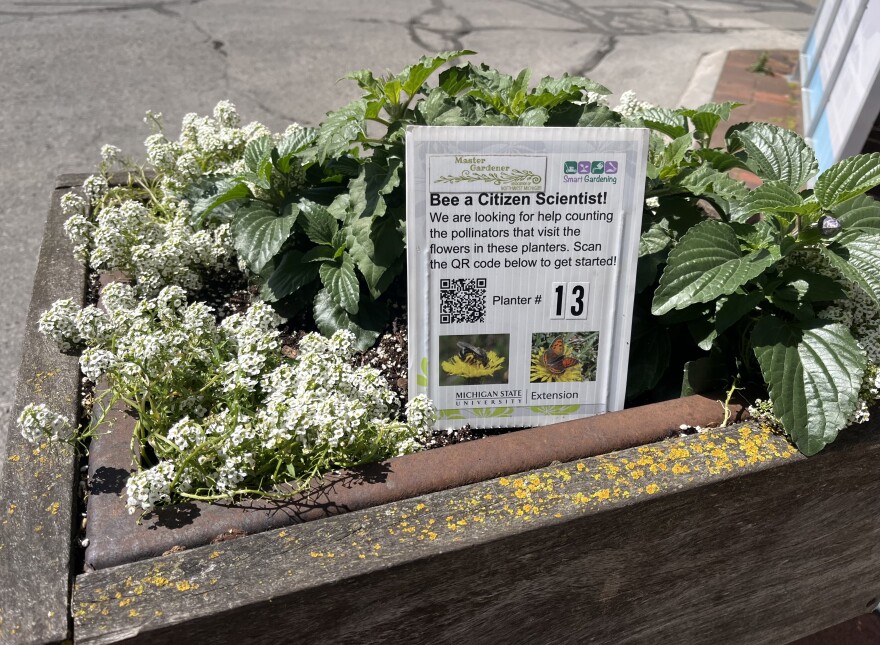This coverage is made possible through a partnership between IPR and Grist, a nonprofit environmental media organization.
Planters — those big boxes that hold ornamental plants — are a staple of many downtowns, often used to beautify the streets.
In Traverse City, they’re also the basis for a citizen science program to count pollinators.
Small signs stuck in the boxes among the flowers encourage passersby to take three minutes to count and categorize the visiting insects, such as bees, flies and butterflies.
People can scan a QR code on the signs to open an online survey. There, they can list the number of insects they see around the planters.
The project started a few years ago as a collaboration between the Traverse City Downtown Development Authority, the Master Gardener Association of Northwest Michigan and Michigan State University Extension.

“It's a little piece of an effort… that's going on around the country, and I'd say around the world, about just getting more information about pollinators,” said Nate Walton, an educator with MSU Extension based in Leelanau County. “This is kind of our way to raise awareness about pollinators and also to do what we can to just collect some data and contribute to that. I think as a standalone project we need more data.”
It will likely take many years before they have a solid data set for the region, Walton said. In the meantime, he hopes the project will continue to encourage public participation.
“One of the things that I get more excited about, honestly, is the fact that humans are doing this,” he said. “That they're taking time out of their vacations usually, or maybe their workday, and at least spending three minutes to look at flowers and look at insects visiting those flowers.”
Pollinators are facing a slew of threats — from pesticide use to dwindling habitat to a warming climate.
Even small efforts to monitor the populations are meaningful in more urban areas like Traverse City, said Sue Hudnut, the president of the Master Gardener Association of Northwest Michigan.
“You have a lot of cement, and you're displacing a lot of animals and insects,” she said. “If you do counts, that helps further the data for scientists to study what's going on around us.”
Data gathering is one thing, but keeping the planters pretty is another. And they require quite a bit of maintenance.
Hudnut said volunteers meet weekly to prune and clean up the planters (sometimes people leave garbage in them).
The plants also have to be watered several times a week. The Downtown Development Authority helps coordinate that with the local Child and Family Services YouthWork program.
“That's no small feat,” said Harry Burkholder, the DDA’s interim CEO.
Another question is which species to choose. Right now, the planters contain mainly non-native plants; native plants can be taller and less than ideal for businesses.
“We don't want anything too tall, so it blocks the view of the shops and restaurants that line Front Street, so they need to complement the storefronts,” Burkholder said.
Walton, with MSU, said they chose plants that would attract pollinators and provide flowers throughout the season, and they are aiming to include more native species in the coming years.
MSU has worked with volunteers to establish a similar project in Frankfort, and organizers hope to expand to other towns as well.
Copyright 2024 Interlochen Public Radio


